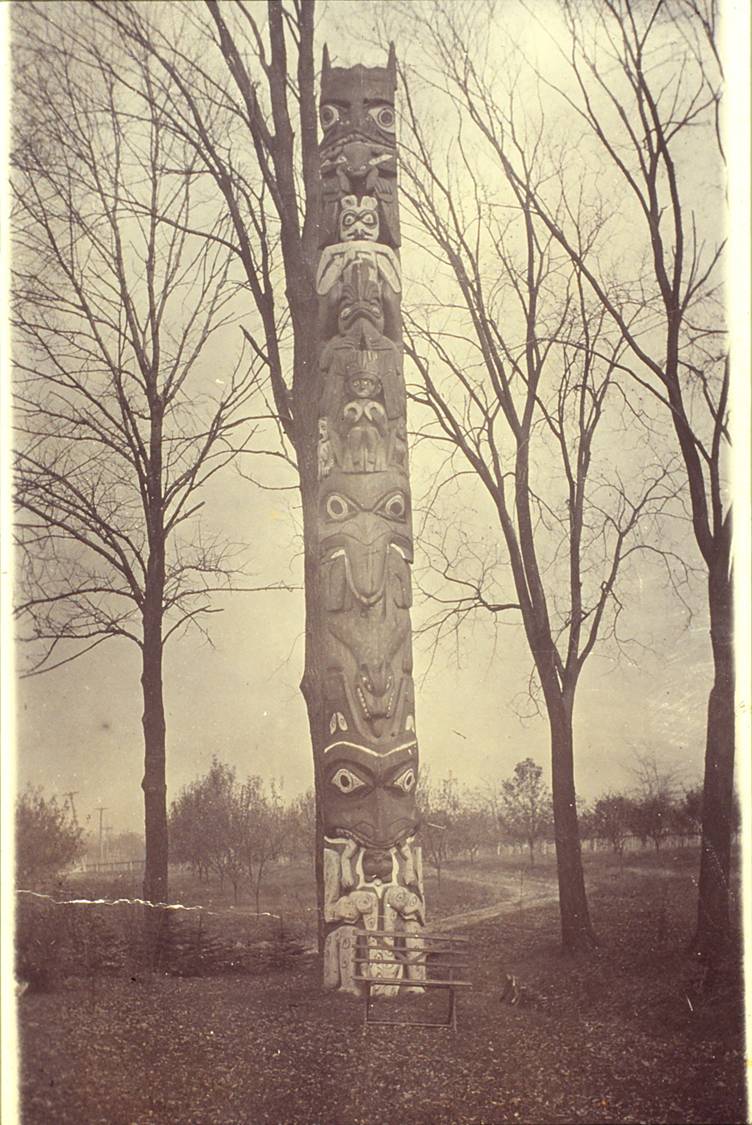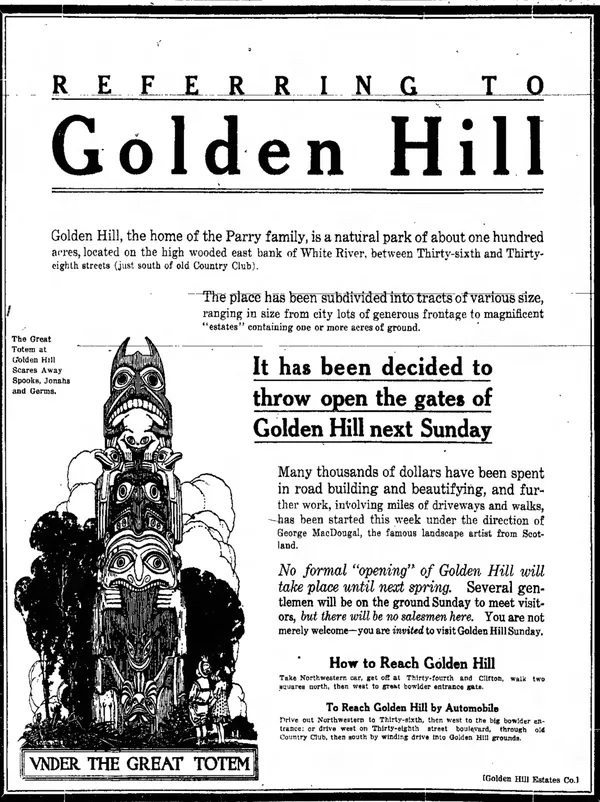In the fall of 1903, Hoosier native and then-governor of the Alaska Territory John Brady sailed on the U.S. Revenue cutter around Prince of Wales Island in Southeast Alaska collecting 15 totem poles from Haida and Tlingit villages. Brady was instrumental in the preservation and relocation of the totem poles from these villages to the park he envisioned establishing at Sitka, Alaska, which later became Sitka National Historical Park.

But first, Brady transported these 15 totem poles to the 1904 Louisiana Purchase Centennial Exposition in St. Louis—known as the St. Louis World’s Fair.
The 15th totem pole had broken into 3 pieces during its collection in Alaska. The native carvers who accompanied Brady considered the broken one irreparable. Brady then loaned the pole to Captain Dick Craine, an entertainer who managed the Esquimaux Village exhibit. Craine displayed it for the whole fair.
After the fair, Brady sold this restored pole to Russell E. Gardner, founder and president of the Banner Buggy Company in St. Louis, who presented the totem pole as a gift to Indianapolis industrialist and buggy and automobile manufacturer, . Parry erected the pole on his Golden Hill estate in 1905. The estate was subdivided into the neighborhood of in 1915.
The 30-foot totem pole graced the Golden Hill neighborhood until it eventually rotted and fell during a storm in 1939. The felled pole was donated to (TCM), but after years of warehousing, TCM discarded the totem pole.

In 1991, Richard Feldman established the Eiteljorg Museum Totem Pole Project to recreate the totem pole and restore the replica to Indianapolis. Prominent Haida clan chief George Yeltatzie had given the original totem pole to Brady for its preservation and relocation from the native village of Koianglas to Sitka. That pole was referred to as a Wasgo. It was adorned with a sea monster, which served as the family crest. The pole told the mythological history of the Yeltatzie family. Haida artist Lee Wallace of Ketchikan (the great-grandson of the original pole’s carver, Dwight Wallace) created a replica of the pole. It was raised in the traditional manner on the museum’s front lawn in 1996. To preserve the wood totem pole’s integrity, it was moved inside the in Indianapolis.
The erected a historical marker at the site where the Golden Hill Totem Pole first stood on the Parry property in 1992.

Help improve this entry
Contribute information, offer corrections, suggest images.
You can also recommend new entries related to this topic.




